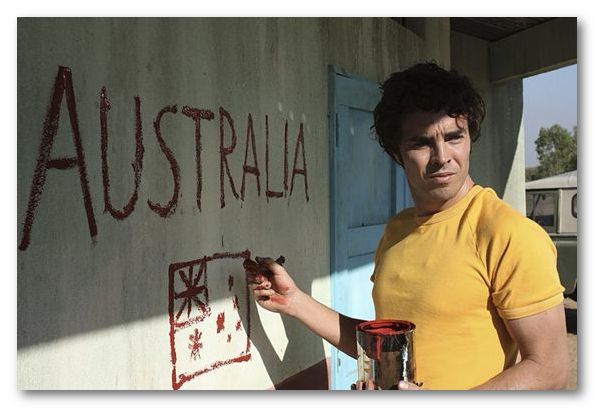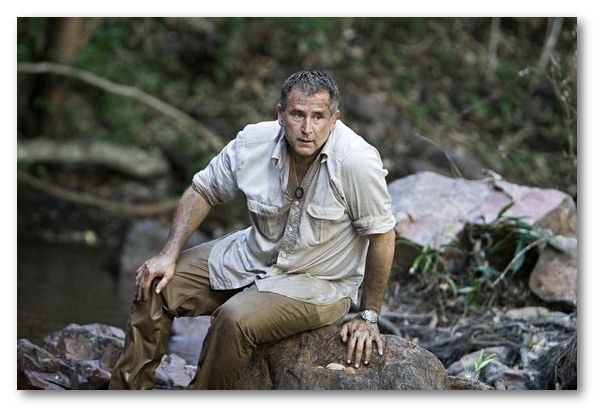Quinton Temby
Anthony LaPaglia as journalist Roger Eastwww.balibo.com |
Is it more exciting to watch Robert Connolly’s feature film on the Balibo Five at a clandestine screening in Jakarta, at which people joke that the military is coming and commentators give defiant statements to the waiting national media? Of course it is. The ban by the Film Censorship Board on 1 December – which transpired just moments before Balibo was to be shown at a meeting of the Jakarta Foreign Correspondent’s Club – has prevented the film from running at this year’s Jakarta International Film Festival. But Balibo is much bigger now: it’s mainstream news, it’s a cult film in NGO circles, it’s a debate.
Balibo is also a fine film. Its writers – Robert Connolly and acclaimed dramatist David Williamson – deftly chose to the tell the story through the journey of a sixth Australian journalist, Roger East, who went to East Timor on the eve of the Indonesian invasion in 1975 to find out what had happened to his fellow newsmen. A hulking and sweat-glazed Anthony LaPaglia (star of the US series Without a Trace) plays this role with measured intensity, taking us from the languor and beer of Darwin to Dili and on to the ghostly border town of Balibo. Meanwhile, the tragedy of the three Channel Seven and two Channel Nine journalists unreels in the washed-out tones of the 1970s. The film’s greatest achievement is the authenticity with which it recreates the historical mood. The thrill and foreboding of pre-invasion East Timor is evoked beautifully.
The tragedy of the three Channel Seven and two Channel Nine journalists unreels in the washed-out tones of the 1970s
East is guided on his search by future East Timorese president José Ramos-Horta, effortlessly acted by Guatemalan-American Oscar Isaac. But the standout supporting performance is Damon Gameau as Channel Seven reporter Greg Shackleton. Gameau movingly brings back to life Shakleton’s wide-eyed bravery, and his youthful gravitas in that immortal piece to camera from ‘an unnamed village that we will remember forever in Portuguese Timor’.
The film is not flawless. There are missteps here and there where it slips into sentiment or sensation. Surely it was a mistake to portray the commander of the border invasion, Colonel Dading Kalbuadi, as present at Balibo to execute one of the journalists with his pistol. In reality he directed events from another town. This scene confuses a key historical point, adds little to the drama (for how many would know this is meant to be Kalbuadi, besides those who look it up only to discover an artistic liberty) and Kalbuadi comes off a mere mastermind’s caricature anyway.
 |
Damon Gameau as Channel Seven reporter Greg Shackletonwww.balibo.com |
But it is unfair to say that Balibo whitewashes history. Journalist John Pilger claims there has been a ‘travesty of omissions’ with David Williamson’s original screenplay being re-drafted to cover-up the complicity of the Australian and US governments. Indeed, the film almost exclusively follows the drama in East Timor, rather than the realpolitik in Jakarta, Canberra and Washington. But it makes pointed reference to Washington’s green light for the invasion and Canberra’s connivance. These western governments’ support for Indonesia and indifference to the fate of the journalists – and the East Timorese people – is depicted as the political context within which the events on the ground take place. To tell the story from the vantage of East Timor – to create a strong sense of place by filming at the actual sites of the events and drawing on East Timorese talent – rather than through the lens of international relations is the writers’ prerogative and a choice that makes this film memorable. After all, Balibo is historical fiction for the box office, not a documentary for classrooms.
While heavily fictionalised, it is faithful to the moral and political significance of the events of 1975
It is a popular film, but one of integrity. While heavily fictionalised, it is faithful to the moral and political significance of the events of 1975. It shows how the Balibo Five died trying to expose Indonesia’s covert invasion, while allowing for the question of whether they took an unwarranted risk. It portrays the brutality of the Indonesian military, but not without justification or nuance: a violation is also committed by Fretilin soldiers against a suspected Indonesian spy. It finally acknowledges the personal sacrifice made by Roger East, but without romanticising his role. Importantly, the film reflects the 2007 finding of an Australian coroner – the first serious inquiry into the Balibo Five deaths – that the journalists were killed deliberately by Indonesian special forces to cover-up the invasion. All this is framed by the greater tragedy that befell the East Timorese.
In Jakarta the film continues to circulate in the semi-underground, while those who lined up to see it at the festival (where it stayed on the schedule) have been turned away. Those lucky enough to have caught an illicit screening are discussing which parts were ‘real’. The full spectrum of reactions has emerged, from its detractors in the military to its supporters in the press. Tempo magazine made Balibo its cover story after interviewing a witness, former special forces soldier Gatot Purwanto, who was in the audience at a screening. Gatot, while prevaricating on the issue of the intentionality of the killings, has nevertheless contributed important new testimony, confirming that the journalists died in a cover-up to prevent news of the Indonesian invasion escaping. Thus from the invasion to today, the cycle of cover-up leading to exposure leading to publicity repeats. Impunity may reign but the truth about Balibo still wants to be free. ii
Quinton Temby (quinton.temby@anu.edu.au) has reported from East Timor for ABC radio and is a PhD candidate in the Department of Political and Social Change at the Australian National University.
